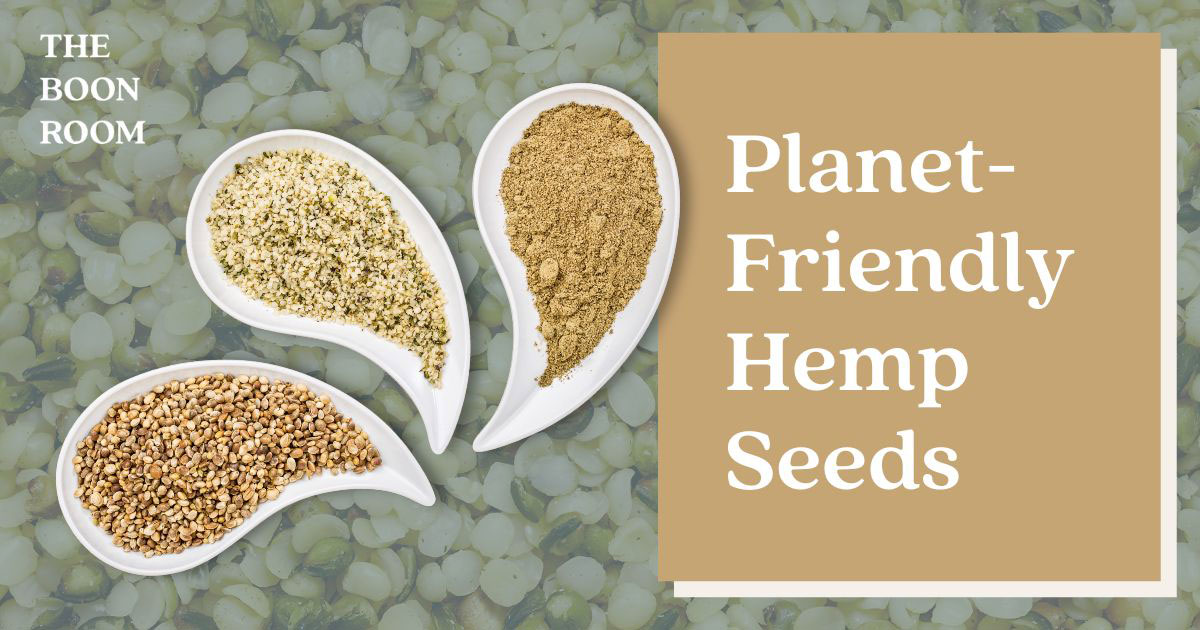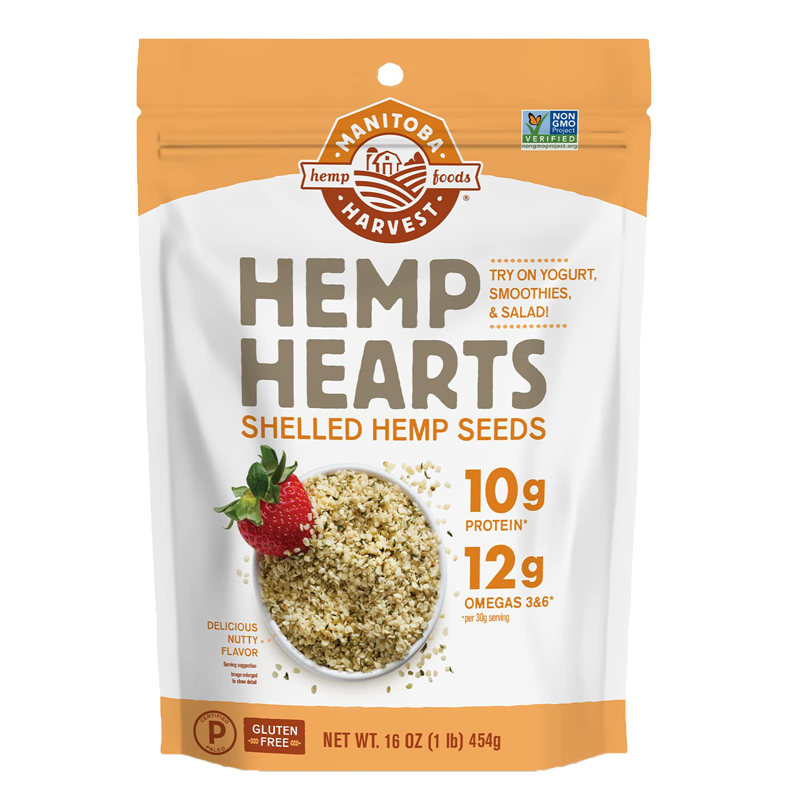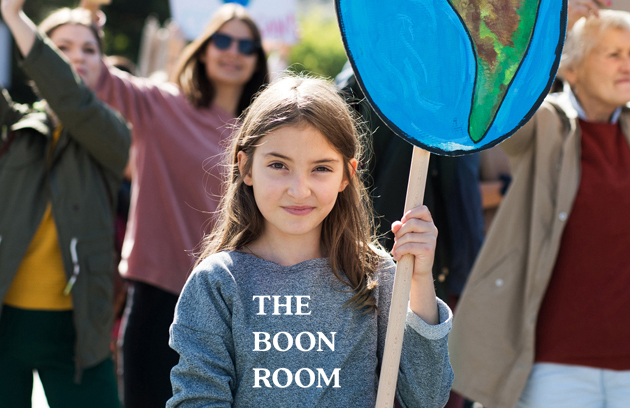What Is Hemp?
Hemp is a plant in the Cannabis family with long, star-like leaves and tall stalks that grow taller than people. While they are technically the same species as marijuana, Cannabis sativa L., the two have some key differences. Unlike its psychoactive brethren, hemp contains very little THC, so it is not psychoactive.
Hemp produces incredibly strong fibers that have a wide variety of industrial uses, such as textile manufacturing, ropes, bioplastics, and more. You can also consume parts of the hemp plant without worrying about feeling high. Modern technology has also come a long way to make hemp in all its various uses more accessible.
Legal to Illegal and Back Again
Because of its many applications, hemp has been a common crop throughout much of human history. Both Thomas Jefferson and George Washington grew it on their estates to make rope, nets, and other fiber goods for their estates, and it was fully legal up until the Marihuana Tax Act of 1937 put such incredible penalties on its sale that it ground most of its production to a startling halt. Reasoning behind the Tax Act varied from the competition hemp posed to other crops like cotton and lumber, as well as anti-jazz and anti-black sentiment (which has its own complicated history).
The actions against both marijuana and hemp continued throughout the 20th century but culminated in the Controlled Substances Act of 1970. This Act made any plant containing any amount of THC (no matter how minuscule) a Schedule 1 controlled substance. This ended nearly all hemp farming in the United States until a concerted push by advocates included its decriminalization and reauthorization in the 2018 Farm Bill, which removed hemp from the federal list of controlled substances.
As a result of hemp being legalized once more, you once again have the right to purchase hemp products. With this legalization came the advent of many new products, including items made with hemp hearts and seeds.
What Are Hemp Hearts?
Hemp hearts are the unshelled seeds of the hemp plant. While hemp seeds are edible on their own, they have a grassy taste that not everyone loves in every dish. However, if you remove the shell, the nut inside is light white to pale silver and has a very bright and clean nutty flavor that some have described as delicate.
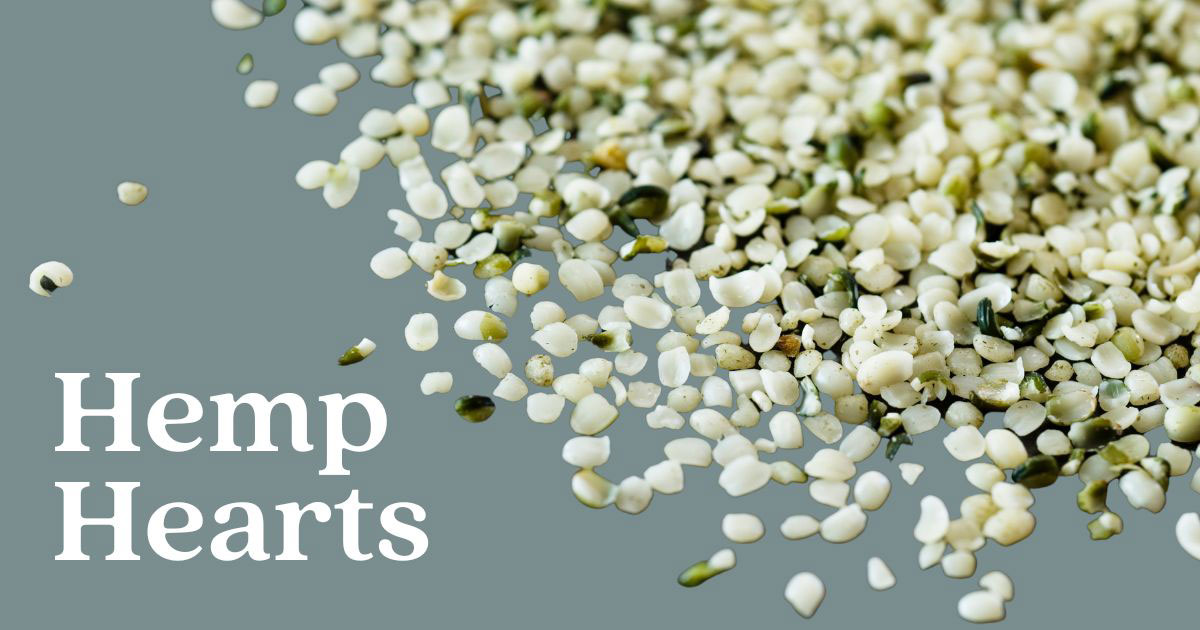
Each heart is about the size of a small bead and crunches very gently. They’re extremely good additions to oatmeal or other baked goods where you’d traditionally like a little bit of nutty flavor.
Are Hemp Hearts a Good Protein Source?
There are many health benefits of hemp seeds as part of your daily diet. In about three tablespoons of hemp hearts, you have about ten percent of your daily protein requirements right there. That’s an incredibly concentrated hit of protein.
Keep in mind that not all protein is made equal. Different proteins are made up of different amino acids, and there are some that we can’t make ourselves, which are known as the nine essential amino acids. All nine of the essential amino acids are present at high levels in hemp hearts, making them an incredibly valuable source of these aminos. This is particularly remarkable in light of the fact that compared to other protein sources, hemp takes less land and less water to produce than similar protein sources.
Hemp Hearts as a Vitamin Source
Hemp hearts are also rich in a set of minerals and vitamins that are essential to human health. They’re great sources of iron, magnesium, and manganese which are involved in the maintenance of bones and muscles. They also boast a strong suite of B vitamins, which help to maintain our energy levels.
What Are the Advantages of Growing Hemp?
Hemp can be cultivated simultaneously for food and industrial products, making it a truly remarkable product. The same plant that produces a complete protein can also simultaneously produce fiber more efficiently than comparable crops. In comparison to cotton, hemp requires approximately three times less land to produce the same amount of fiber. So, how in the world does hemp do so much work so efficiently? It has several key advantages in growth.
Competitive Grower
Hemp grows very densely and incredibly quickly, covering the ground and stretching up to the sun simultaneously with its broad leaf fronds. This means that, unlike other crops, it rapidly outlasts weeds without our help. Other crops need constant tending and weeding because their canopies do not block light from reaching the ground or do not establish themselves fast enough.
Eliminating competitors without help means that we don’t have to add any herbicide to grow hemp, eliminating chemicals from the soil and water and reducing costs. Weeds soak up the nutrients and water that you intended for your crops, which means that even if you get rid of them after they sprout, you still need to add more fertilizer and water. With properly planted hemp, you don’t have this problem.
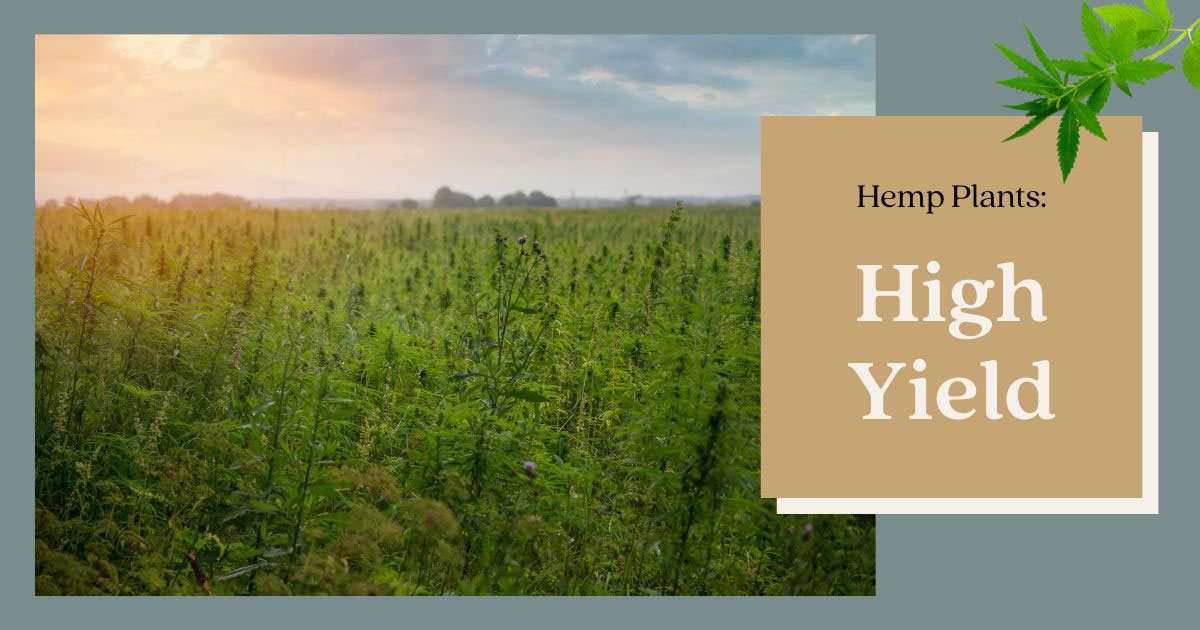
High Yield
The density and speed of its growth also give it a very high yield. This means less land investment and quicker turnaround. It also means that you’ll need to move your farm equipment shorter distances to get the same yield, which turns into carbon emission savings very quickly.
Pest Resistant
Hemp also has very few insect, fungal, or bacterial predators in the wild. This means that while other crops require pesticides to prevent bugs or disease, effective hemp growers need to do very little spraying on a yearly basis. This is a huge cost savings, but it also helps to protect our water sources and human health. In addition, it eliminates the emissions involved in making those pesticides in the first place.
Low Water Requirements
Hemp has roots that dwarf its prodigious height, penetrating deep into the soil to seek the water table beneath. This means that even when the soil is quite dry on top, hemp can stay hydrated by accessing water that many crops cannot. While every plant needs water to survive, when you add water to the surface of an area, much of it evaporates. Even water trickled into the first few inches of soil loses some to the air above. By tapping deeper resources that are already present, hemp prevents those losses for growers.
Soil Maintenance
While many people don’t think about this part of growing plants, farmers certainly do. Soil will deplete over time if it is used for an extractive crop, as the plants take away certain nutrients to grow. Certain plants return more or less of their nutrients to the soil on harvest and depending on how they are processed and how the field is tilled. Hemp is one of the best plants at returning its nutrients to the soil.
Soil also gradually becomes compacted as heavy equipment drives over it repeatedly, leading to fewer gaps in the soil. As there are few gaps in the soil, plants have a harder time with respiration, and there is less space for water to seep through. Both of these are significant problems for growers in the long run if they go unaddressed. Hemp’s deep taproots open up the soil structure at very deep levels that are nearly impossible to reach otherwise. This helps to restore soil structure and keep fields productive for longer.
Carbon Sequestration
Those same qualities that make hemp an excellent grower also sequester carbon every time the plant eats carbon dioxide out of the air to grow. Those deep tap roots and returned nutrients trap carbon deep inside the soil, where it’s very hard to get it out. The durability of its fibers also traps carbon for a long time.
How Else Is Hemp Used?
It’s worth remembering that the same hemp plant that you get your hemp hearts from will also go on to be used in other products. This continues to multiply the immense efficiency of hemp. Every piece of the plant, from root to bloom, can be used for some purpose or another.
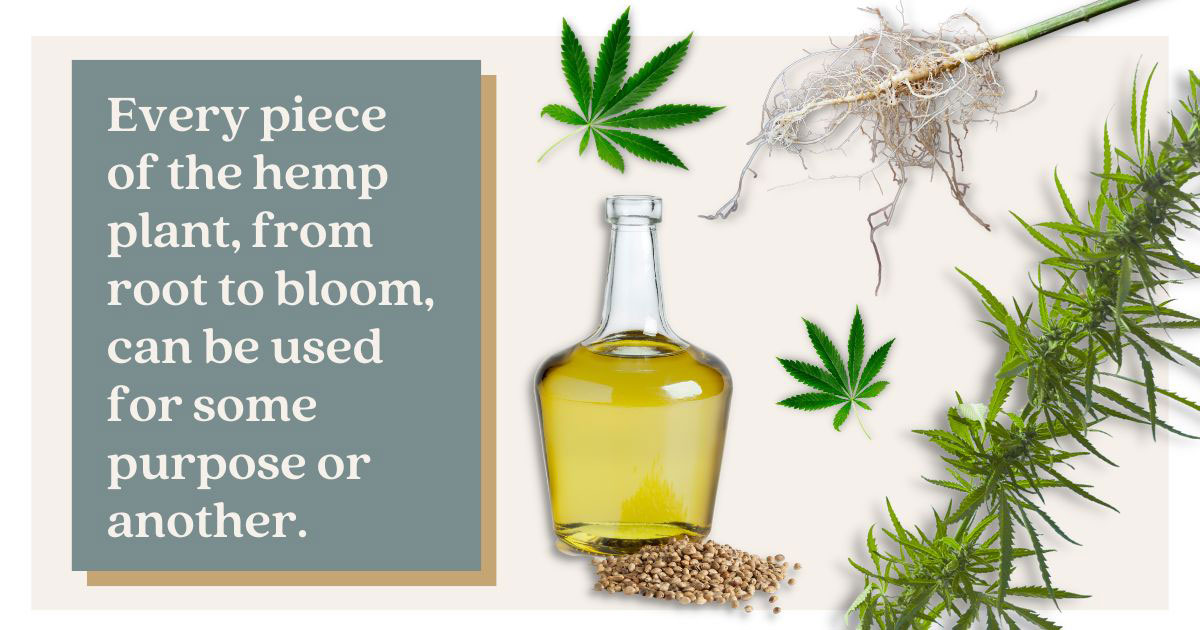
Root
The root of the hemp plant, along with other pieces, can be used to make biofuels that are greener than fossil fuels. Biofuels recycle existing atmospheric carbon rather than sending new carbon dioxide up into the atmosphere.
Stem
The stem of the hemp plant can be used in all sorts of fiber products, easily replacing cotton or polyester in clothing. Cotton is less durable than hemp, and hemp is also more water-wicking and thermoregulating than cotton.
The woody hurd of the hemp plant can also be used to make paper, taking pressure off forests, which take longer to grow and are harder to replace. While hemp paper is more costly than wood pulp paper right now, the process continues to be refined.
Hemp can be used as part of board and concrete composites in construction, replacing wood or stone in certain applications.
Oil
The oil of the hemp plant has a wide variety of applications. The most common applications for hemp oil are in soaps and moisturizers, where the amino-acid-rich profile gives it a luxurious texture. Hemp oil is also excellent as a high-temperature oil in lots of cooking applications.
Less well-known is the fact that those same oils can be used to make biodegradable plastics for everything from water bottles to even car parts. As early as the 1940s, Ford made plastic car parts out of soybean and hemp composite oils, and since 2008, the trend has started to resurface.
Leaf & Flower
Lastly, while there is extremely little THC in the flowers and leaves of hemp, there can be varying amounts of CBD. CBD has potential applications for pain and other conditions.
The Future of Hemp
Since its re-emergence as a legal crop in 2018, hemp and new applications for hemp have been booming. As the future progresses, more and more of the crop will be able to be used as the infrastructure for it continues to develop.
Best of all, you won’t have to worry about hemp hearts’ effect on the planet since Manitoba Harvest is carbon-neutral certified.
From clothes to construction, hemp has a key role to play in the future of our planet. Learn more about hemp by subscribing to The Boon Room newsletter.
Jenny Weatherall is the co-owner and CEO of Eminent SEO, a design and marketing agency founded in 2009. She has worked in the industry since 2005, when she fell in love with digital marketing… and her now husband and partner, Chris. Together they have 6 children and 3 granddaughters.
Jenny has a passion for learning and sharing what she learns. She has researched, written and published hundreds of articles on a wide variety of topics, including: SEO, design, marketing, ethics, business management, sustainability, inclusion, behavioral health, wellness and work-life balance.
